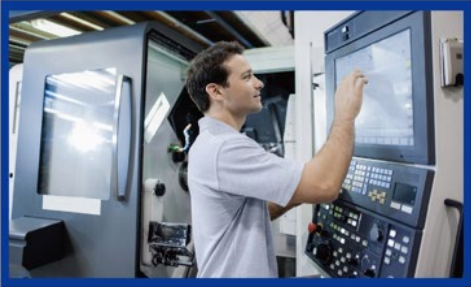In the industrial sector, the use of touchscreens is becoming increasingly popular due to their ease of use and versatility. The two most common types of touchscreens used in industrial applications are capacitive and resistive touchscreens. But which one best suits your needs? In this article, we'll discuss the differences between the two and help you choose the one that best suits your application.

Which is better for industrial applications, resistive or capacitive touchscreens?
First, let's understand resistive technology. It is a touchscreen technology that uses the principle of voltage division to detect the touch position. It consists of two conductive layers, one of which is a conductive glass and the other a conductive coating, separated by an insulator. When the surface of the touchscreen is pressed, the resistance between the conductive coatings changes, allowing the touch position to be calculated.
In industrial environments, resistive touchscreens put less pressure on the object being touched and can be touched with almost any object, such as a finger or pen. This makes resistive touchscreens suitable for gloved operating environments, such as factory production lines. Second, resistive touchscreens are relatively inexpensive and easier to replace and repair, which is very important in industrial equipment. In addition, resistive touchscreens are more resistant to scratches and can withstand harsher working conditions.
However, resistive touchscreens also have some limitations. Firstly, as resistive touch screens require direct contact with the screen to achieve operation, they are susceptible to interference from external environmental factors, such as dust and water droplets, which may affect the sensitivity and accuracy of the touch. Secondly, the response speed of resistive touch screens is relatively slow, making them unsuitable for scenarios that require high-speed operation. In addition, resistive touchscreens have low visible light penetration, which may reduce the display effect.

Next, let's take a look at capacitive touch screens. It is a touch screen technology based on the principle of capacitance to detect the touch position. It consists of a layer of conductive glass and a layer of sensing electrodes. When touching the surface of the touchscreen, the body's electrical charge causes a change in the charge on the layer of sensing electrodes, which detects the touch position.
In industrial environments, capacitive touchscreens require higher touch sensitivity with higher accuracy and response speed. This makes capacitive touchscreens ideal for scenarios that require frequent and fast operation, such as large instruments and control panels. Second, capacitive touchscreens support multi-touch, allowing for richer operational capabilities. In addition, capacitive touchscreens offer better light transmission and clearer displays. It also has a high degree of reliability and can operate stably for a long time in harsh working environments, with strong anti-interference ability, dustproof, waterproof and oil-resistant features.
However, capacitive touch screen also has some limitations. Firstly, as capacitive touch screen needs electric charge to sense the touch position, it can only be contacted with conductive objects, and when some scenes need to wear gloves to work, capacitive touch screen needs special treatment. Second, capacitive touch screens are relatively expensive and difficult to replace and repair. In addition, capacitive touch screens are poorly resistant to scratches and are easily damaged in harsh environments.

Recommendation:
For industrial applications that require high operating experience and responsiveness: Capacitive touchscreens are a better choice because of their high sensitivity, high accuracy and fast response time.
Cost Considerations: Resistive touch screens are relatively low cost and are suitable for cost-sensitive industrial applications; capacitive screens are more costly but offer better operating experience and performance.
If you are unsure which type of screen is best suited to your application, write to us for advice. Our company has experienced engineers who can help you assess your needs and provide expert advice on which screen technology will provide the best performance and efficiency for your industrial application.


